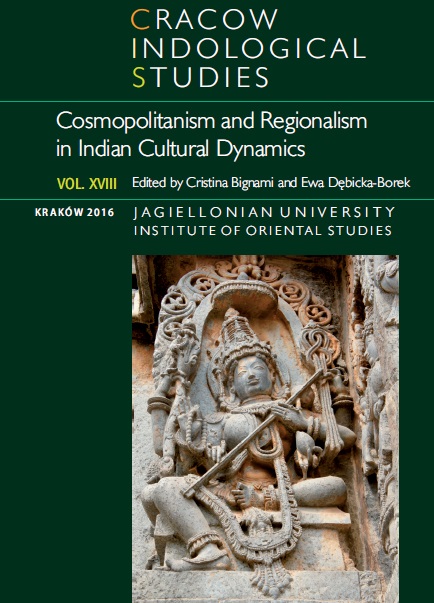When the God Meets a Tribal Girl: Narasiṃha’s Second Marriage in the Light of the Vāsantikāpariṇayam
When the God Meets a Tribal Girl: Narasiṃha’s Second Marriage in the Light of the Vāsantikāpariṇayam
Author(s): Ewa Dębicka-BorekSubject(s): History, Ancient World
Published by: KSIĘGARNIA AKADEMICKA Sp. z o.o.
Keywords: second marriage myth; second wife; Narasiṃha; Vāsantikāpariṇayam; Vijayanagara; Ceñcū; Ahobilam; Śrīvaiṣṇavism; adaptive re-use
Summary/Abstract: A widely diffused pattern of a recognized god who takes a second wife, usually local, has essentially articulated the acculturation of tribes or other spatially and socially separated groups. This motif has been discussed regarding South Indian literary traditions, where two brides are opposites in terms of origin, status and appearance, and a double marriage metaphor that aims at reconciliation of two distant spheres should be often contextualized within bhakti ideology. The motif of unconditional devotion of the additional wife to her husband is also closely connected to Vijayanagara politics: a local girl as a spouse may reflect the extension of both royal and spiritual power symbolized by the god. The present paper explores the strategy and purpose of the adaptive re-use of a vernacular legend from the area of Ahobilam about the love between Narasiṃha and a Ceñcū huntress, as extolled by the author of a Sanskrit drama entitled Vāsantikāpariṇayam.
Journal: Cracow Indological Studies
- Issue Year: 2016
- Issue No: 18
- Page Range: 301-338
- Page Count: 39
- Language: English

